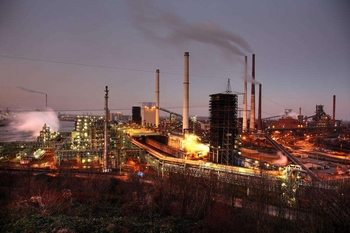 Home > News
Home > News



Steel companies can now hope for some support from the government's recently approved National Steel Policy 2017, which broadly focus on increasing production and promoting domestic players.
Close to 37 percent, or about 1.15 lakh crore, of the total exposure of Rs 3.13 lakh crore provided to India’s steel sector has already turned non-performing. This is close to 19 percent of the total non-performing assets in the banking sector, hence making it a matter of utmost concern.
After the Chinese crisis and slump in global steel sector last year, many steel companies - especially marginal players - are on the verge of shutting down. Thanks to the imposition of import duty and recovery in steel prices, Indian steel firms have been able to breathe in recent times.
Of the 139 steel companies that reported numbers for the December 2016 quarter, 64 of them reported cumulative losses of Rs 3743 crore, as against the profit of Rs 1545 reported by the remaining 76 companies.
While the majority of steel companies continue to lose money, they can now hope for some support from the government's recently approved National Steel Policy 2017, which broadly focuses on increasing production and promoting domestic players.
As against the current production capacity of about 122 million tonnes, the government intends to take India’s steel production to 300 million tonnes by 2030-31. This works out to an annual growth of about 7 percent over the next 14 years.
This dovetails well with government’s intentions of promoting economic growth through investments in infrastructure and railways, initiatives like Make in India and smart cities - all boosting steel consumption. A lack of capacity could actually inflate prices and in turn would be inflationary.
Meanwhile, most of the marginal players in the industry are stressed and banks are averse to lend money to these companies, indicating that large players will be big beneficiaries at least in the medium term.
Companies such as SAIL, JSW Steel and Tata Steel have already undertaken huge capacity expansion and are waiting for revival. SAIL recently expanded its capacity from 12.8 million tonnes to about 22 million tonnes and a large part of this capacity is sitting idle as there is not enough demand in the domestic market.
Surplus Capacity
As a result of insufficient demand, India’s steel capacity utilisation post-2008 had dropped from 98 percent to 80 percent in FY14 and further to around 75 percent currently. The capacity addition in recent times also contributed to lower capacity utilisation.
“The policy is good in terms of providing long-term direction to the sector, but there is nothing that can immediately lead to major boost for the sector,” said Abhisar Jain, Vice-President of Research at Centrum Broking.
The immediate concern for the sector is demand revival.
“Big policy announcements are all intentional, which will augur well in the long term. However, we really need to see how the government is going to facilitate that with an appropriate demand support," said Sanjay Jain, who is tracking the sector at Motilal Oswal. "In FY17, the demand grew at meagre 3 percent. There is excess capacity in the market and the balance sheets of most of the players are highly leveraged. Today these are the bigger issues that need to be addressed and will be more important from the point of view of the listed companies.”
While augmenting steel capacity, generating more demand and helping domestic procurement for all the government-related works augur well for the sector, the benefits of these policies will only accrue in the long term provided global steel prices and demand too remain supportive.
Incidentally, the National Steel Policy 2017 also envisages the use of domestic steel products as mandatory in government departments. This will at least help in improving utilisation levels, which are very crucial for most of the players to recover their interest cost.
Some of the plants for which the loans are taken are actually sitting idle. Improvement in the capacity utilisation will lead to higher operating leverage and help companies’ service their debt and interest cost.
On an average, the 164 listed steel companies that we analysed reported a debt to equity ratio of 2.3 times. In FY16, they cumulatively incurred an interest cost of almost Rs 28,000 crore as against operating profit of Rs 20,142 crore.
XINSTEEL NEWS